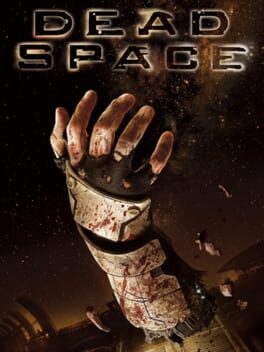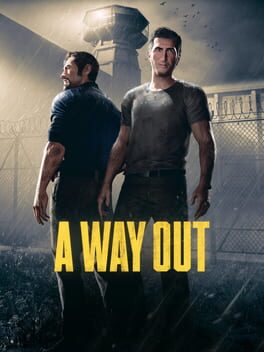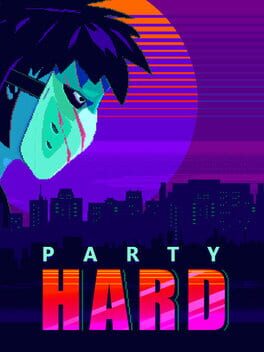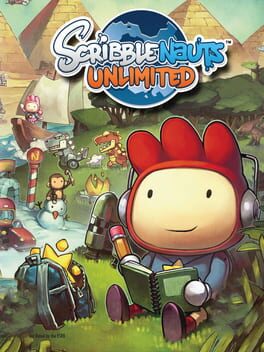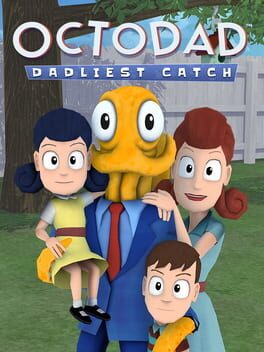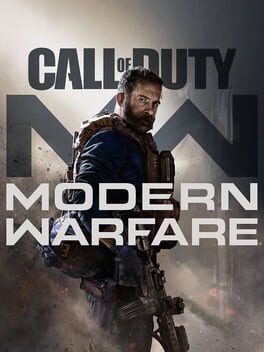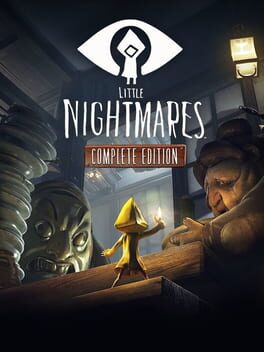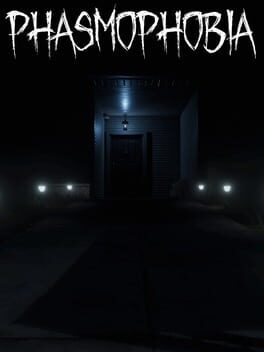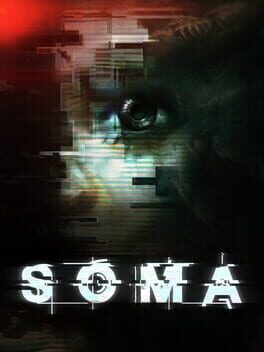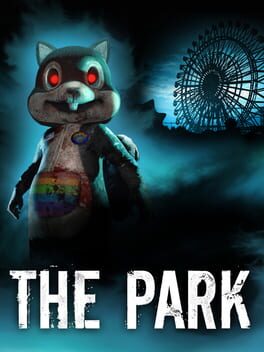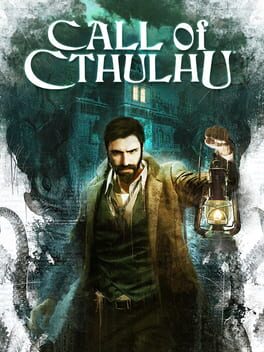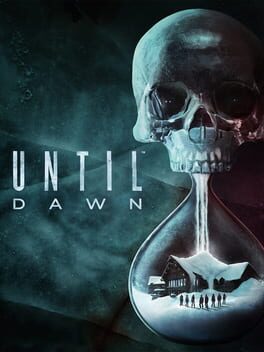Rezlo
BACKER
2016
One cursory glance at Abzu and you know exactly what you’re in for: a small dive (wink) in a gorgeous underwater oasis interspersed with bite-sized puzzles and breadcrumb-like storytelling. By themselves the landscapes and sea life are fun to engage with, but admittedly I would have liked to see more diversity in how chapters played out. Add to that Abzu’s message feels a little too safe and on the nose, though I can sympathize with the difficulty in telling a succinct story in a short game with no dialogue. Now don’t let me sell it short, as the game does succeed in providing exceptional ambience and immersion with its vivid color palette and tranquil soundtrack, in addition to being incredibly accessible. Simply put, If you fancy the idea of an ocean walking simulator then the game is an easy pitch, but I’d argue almost anyone can get some decent mileage out of Abzu.
2008
A paragon in atmosphere and sound design, Dead Space is a game that punches far above the AAA weight class in nearly all categories. Its unique integration of a sci-fi horror shooter experience is seamless, and its streamlined inventory system, unobtrusive UI, and infallible navigation system serve as the sprinkles atop this touchstone of gaming horror.
In the year 2508 you follow Isaac Clarke, a systems specialist sent to repair the USG Ishimura, a mining vessel that’s long since lost contact with the outside world. Given the name of the game, you can guess that things go to hell real quick with monstrously macabre creatures prowling the whole ship. Speaking of, the vessel itself is almost as alive as the surviving crew. The hum-dum of the mechanical ship ambience and unending growls of the beasts just beyond your vision works wonders alongside Isaac’s breathing and heartbeat in heaping on the dread. My only complaint in that department is how Isaac never talks, making it a bit harder to humanize him.
In terms of items Dead Space has no filler. Every object has its use, whether you’re selling it for money or using it to save your life against monsters. To complement that the game possesses a very concise, easily distinct organization of chapters that makes for a natural conclusion to a session, with some light backtracking being the only negative aspect to come with it.
Each store and waystation are spaced out fairly liberally, so you should never really find yourself in trouble when without them. As for actually defending yourself, be assured that the game doesn’t waste its setting. Beside your repurposed planet-mining tools like the plasma cutter and line gun, you've also got a stasis module to slow down enemies and a telekinetic gauntlet to throw objects, a fact that serves as a real joy in allowing you to creatively dispatch your enemies. The likes of which you can’t help but be in grotesque awe of. Collectively, these potent ingredients make Dead Space a thrilling adventure not easily surpassed.
In the year 2508 you follow Isaac Clarke, a systems specialist sent to repair the USG Ishimura, a mining vessel that’s long since lost contact with the outside world. Given the name of the game, you can guess that things go to hell real quick with monstrously macabre creatures prowling the whole ship. Speaking of, the vessel itself is almost as alive as the surviving crew. The hum-dum of the mechanical ship ambience and unending growls of the beasts just beyond your vision works wonders alongside Isaac’s breathing and heartbeat in heaping on the dread. My only complaint in that department is how Isaac never talks, making it a bit harder to humanize him.
In terms of items Dead Space has no filler. Every object has its use, whether you’re selling it for money or using it to save your life against monsters. To complement that the game possesses a very concise, easily distinct organization of chapters that makes for a natural conclusion to a session, with some light backtracking being the only negative aspect to come with it.
Each store and waystation are spaced out fairly liberally, so you should never really find yourself in trouble when without them. As for actually defending yourself, be assured that the game doesn’t waste its setting. Beside your repurposed planet-mining tools like the plasma cutter and line gun, you've also got a stasis module to slow down enemies and a telekinetic gauntlet to throw objects, a fact that serves as a real joy in allowing you to creatively dispatch your enemies. The likes of which you can’t help but be in grotesque awe of. Collectively, these potent ingredients make Dead Space a thrilling adventure not easily surpassed.
2018
A lukewarm co-op game whose major pitfall is being woefully uninspired. A Way Out does grant some decent enjoyment, but not from what it offers at face value. The voice acting is subpar, the writing fit for Wattpad, and the main story is comically generic. Where it does shine is in the moment to moment skits that come with playing the game with a good co-op partner. The throwaway mini-games, derpiness of the presentation and dialogue, and general absurdity makes the game charming despite its flaws. And it does so in a way that makes A Way Out an unintentionally excellent comedy.
A good example is when one player is left to goof around and throw darts while the other is having what should be a serious conversation with a family member, made even funnier by the unflinchingly straight way the game is presented. Yet, even those moments are too fleeting to carry the rest of the game. Don’t get me wrong, the split-screen approach is a fun throwback and the commitment to cooperative actions is admirable, but in practically every sense A Way Out is more novelty than novel.
A good example is when one player is left to goof around and throw darts while the other is having what should be a serious conversation with a family member, made even funnier by the unflinchingly straight way the game is presented. Yet, even those moments are too fleeting to carry the rest of the game. Don’t get me wrong, the split-screen approach is a fun throwback and the commitment to cooperative actions is admirable, but in practically every sense A Way Out is more novelty than novel.
2015
Party Hard is true to its name; it’s a decently hard game, a fact I wouldn’t mind if it wasn’t quite as punishing as it is. The stamina, AI eyesight, and frequent cops make for a sometimes frustrating experience when all your progress is lost because there’s nowhere or way to run, sometimes due to the structure of the map itself. Conversely, the gameplay loop is something I actually quite enjoyed in its most basic essence. Being a party-stalking slasher is a great hook and rife with potential, but Party Hard doesn’t go all in, a sad fact given what this game could be. There’s not enough traps, characters, items, weapons, and enemy varieties for the type of game this is. A game like Party Hard is meant to survive and thrive based on its diversity of options, but more often than not you're left with only your trusty knife and a prayer. While perfectly playable, Party Hard leaves you wanting more than it can give you.
A textbook pick-up-and-play title for couch gameplay, Scribblenauts hits that craving for relaxation just right. It has plenty of worlds and missions to keep you busy for a good while when you’re not testing the limits of your creativity.
By and far the greatest appeal of Scribblenauts is the ability to conjure up a plethora of items, people, and adjective modifiers for all things interactable. While it’s clear some corners have been cut here and there, it’s truly impressive how thorough the developers are in allowing for a good amount of freedom. It’s not the most fleshed out system, but it can be fun to tinker around with. The only thing I’ll harp on is the sometimes fickle strictness some missions have on what counts as correct. Part of the fun is finding the out-of-the-box solutions, but I suppose you can’t prepare for EVERY possibility.
By and far the greatest appeal of Scribblenauts is the ability to conjure up a plethora of items, people, and adjective modifiers for all things interactable. While it’s clear some corners have been cut here and there, it’s truly impressive how thorough the developers are in allowing for a good amount of freedom. It’s not the most fleshed out system, but it can be fun to tinker around with. The only thing I’ll harp on is the sometimes fickle strictness some missions have on what counts as correct. Part of the fun is finding the out-of-the-box solutions, but I suppose you can’t prepare for EVERY possibility.
Octodad: Dadliest Catch embodies nearly everything a light indie title should strive to be. It’s quirky, has a breezy and contained structure, and most importantly doesn’t overextend its premise. It’s a game that never tries to be serious (clearly), yet doesn’t overdose on its wholesomely juvenile humor.
Much to my surprise Octodad’s controls were significantly less cumbersome than I first expected. While still unwieldy in a comical manner, the zany control scheme wasn’t frustrating almost at all, with the exception of times where you were forced to climb a ladder. On the contrary, the wacky movement gimmick gives just the right amount of challenge and chaos to sell you on the game’s cutesy concept. With each mission being fairly short the game is ripe for small-burst sessions or an easy binge if you got the afternoon. Either way, I think the level lengths are perfect just the way they are, though another mission or two wouldn't have hurt. Regardless, If the idea of playing an octopus with questionable control of his limbs as he tries to play dad interests you, Octodad is the game for you.
Much to my surprise Octodad’s controls were significantly less cumbersome than I first expected. While still unwieldy in a comical manner, the zany control scheme wasn’t frustrating almost at all, with the exception of times where you were forced to climb a ladder. On the contrary, the wacky movement gimmick gives just the right amount of challenge and chaos to sell you on the game’s cutesy concept. With each mission being fairly short the game is ripe for small-burst sessions or an easy binge if you got the afternoon. Either way, I think the level lengths are perfect just the way they are, though another mission or two wouldn't have hurt. Regardless, If the idea of playing an octopus with questionable control of his limbs as he tries to play dad interests you, Octodad is the game for you.
Modern Warfare 2019 was a bit of a reentry into the COD-osphere for me. After many formative years spent with the franchise I got a bit fatigued with the lack of innovation and general oversaturation of the shooter market. The only reason I even gave this 2019 reboot a try was because for the first time in a long time, the clips I saw of the game actually made me want to play it. And after playing the game enough to unlock the mastery camo for ALL weapons, I can confidently say I do not regret that decision. If nothing else can be said, Modern Warfare is one of the nicest feeling shooters I’ve ever played. The buttery smooth movement, new features (finishers, NVGs, gunfight mode, doors), and revamped animations really breathed life into a long-retired franchise for me.
Modern Warfare’s larger emphasis on attention to detail and its semi-serious tone is a nice change of pace from the nearly endless Michael Bay-like pile of mindless action that COD has leaned into a little too hard the last few years. It’s still unmistakably Call of Duty, but almost everything it adds to the recipe builds on the franchise’s formula in new and fun ways.
The story is a decent romp, with its shining moments being the ones that are the most serious, historically reminiscence, or tactically immersive. Hopefully they can build on more moments like these in future installments. The maps are gorgeous and I can respect the desire to try something other than endless three lanes, but some maps, and especially the ground war maps, suffer from being a bit too linear and open. Not just a sincere revival of the franchise, Modern Warfare is a fantastic casual shooter that reinforces why Call of Duty is the king of dumb fun.
Modern Warfare’s larger emphasis on attention to detail and its semi-serious tone is a nice change of pace from the nearly endless Michael Bay-like pile of mindless action that COD has leaned into a little too hard the last few years. It’s still unmistakably Call of Duty, but almost everything it adds to the recipe builds on the franchise’s formula in new and fun ways.
The story is a decent romp, with its shining moments being the ones that are the most serious, historically reminiscence, or tactically immersive. Hopefully they can build on more moments like these in future installments. The maps are gorgeous and I can respect the desire to try something other than endless three lanes, but some maps, and especially the ground war maps, suffer from being a bit too linear and open. Not just a sincere revival of the franchise, Modern Warfare is a fantastic casual shooter that reinforces why Call of Duty is the king of dumb fun.
A charming puzzle-based horror whose atmosphere and soundtrack are its strongest points. The dark fantasy art direction reminds me most of Henry Selic’s works, particularly Coraline, perfectly distilling that uncanny valley of creepy-cute mixed with gothic. Coupled with the dark lullabies and booming orchestral themes it’s easy to become engrossed in the experience. It’s a bit shorter than I’d like it to be, but it mostly serves the game to keep the sections brief and succinct, plus the Secrets of the Maw DLC adds a slight increase of challenge and length that I was itching for at the end of the base game. As with most games the bosses are the best part, each providing a short but tense encounter with some of the monstrous creatures that inhabit the ship you’re on. Besides the way-points being a little too punishing in their spread sometimes, the game was a pleasant experience through and through that serves as a great killer of a free evening.
2020
Phasmophobia is a game that lives and dies by the ability of players to wrangle up some friends to go ghost-hunting with. While technically playable solo you’re missing out on the real draw of the game by doing so, limiting shenanigan potential greatly as well as making harder difficulties nearly impossible. While there is enjoyment in strictly trying to figure out the ghost through investigations, the spook factor mostly wears off with time and repetition, and the inclusion of others becomes a near necessity. That isn’t even really a big deal when it comes down to it though, because if you’re playing this game it’s likely you intend to play with friends anyway.
Even with friends the game would still get old before too long, but with the dev(s?) constantly updating with new items, maps, and fixes the game can be a nice riff session for a couple hours every few weekends. Whether it be the silly, borderline-eldritch degree to which the player can stretch their body or the impromptu games of player imposed hide-and-seek, the game is as much a comedy as it is a horror game. An aspect that you come to appreciate when the aforementioned spook factor is diminished over time. At its core Phasmophobia is a decently-janky game that’s limited shelf-life is compensated with hilarious moments of tense ghost chases and player-on-player hijinks. It has no real depth to it, but it’s a fun throwaway title nevertheless.
Even with friends the game would still get old before too long, but with the dev(s?) constantly updating with new items, maps, and fixes the game can be a nice riff session for a couple hours every few weekends. Whether it be the silly, borderline-eldritch degree to which the player can stretch their body or the impromptu games of player imposed hide-and-seek, the game is as much a comedy as it is a horror game. An aspect that you come to appreciate when the aforementioned spook factor is diminished over time. At its core Phasmophobia is a decently-janky game that’s limited shelf-life is compensated with hilarious moments of tense ghost chases and player-on-player hijinks. It has no real depth to it, but it’s a fun throwaway title nevertheless.
2015
When you’re first thrust into the world of Soma, alone and in an unfamiliar research facility many hundreds of feet below the surface, you’re just as confused as the titular protagonist Simon is. With the help of a quickly acquired companion by the name of Catherine, who guides you through your journey by voice alone, you begin to discover the nature of the world around you and learn of a potential last hope for humanity after a catastrophic event.
During this voyage you traverse numerous research stations and underwater locations, all eerily empty except for the few machines that remain. It’s this somber setting that serves as the backdrop to the real bread and butter of the game, Simon’s conversations with Catherine, both about what the world’s become and more philosophical topics like, “what is consciousness?”, “what does it mean to be you?”, and “when do we cease to exist, really?”. All seamlessly strung together in a way that feels inexplicably natural despite the circumstances in which you’re asking them.
In this interweaving of setting and narrative, Soma does something really special. While both can be admired independently for their contemplative qualities and visuals, there is more to it than just that. The various desolate and rundown locations serve as a perfect fuel for the narrative, adding a complementary dash of loneliness, sorrow, and awe. Of course it helps that the game is legitimately beautiful too, and even allows you to toggle a safe mode option, letting you play the game without fear of dying to potential threats. It’s a nice setting for when you want a cerebral experience as opposed to a more visceral one.
My only lament is that it ended at all, but I am satisfied with its length and message. The longer I played the more enthralled I became in the overarching story of failure, redemption, and hope. All that said, don’t think Soma is a non-stop montage of conversation. The game knows when to cease the chatter and let you take in the world, but you know they've succeeded in hooking your interest when you’re excited for the next time Simon or Catherine open their mouths.
During this voyage you traverse numerous research stations and underwater locations, all eerily empty except for the few machines that remain. It’s this somber setting that serves as the backdrop to the real bread and butter of the game, Simon’s conversations with Catherine, both about what the world’s become and more philosophical topics like, “what is consciousness?”, “what does it mean to be you?”, and “when do we cease to exist, really?”. All seamlessly strung together in a way that feels inexplicably natural despite the circumstances in which you’re asking them.
In this interweaving of setting and narrative, Soma does something really special. While both can be admired independently for their contemplative qualities and visuals, there is more to it than just that. The various desolate and rundown locations serve as a perfect fuel for the narrative, adding a complementary dash of loneliness, sorrow, and awe. Of course it helps that the game is legitimately beautiful too, and even allows you to toggle a safe mode option, letting you play the game without fear of dying to potential threats. It’s a nice setting for when you want a cerebral experience as opposed to a more visceral one.
My only lament is that it ended at all, but I am satisfied with its length and message. The longer I played the more enthralled I became in the overarching story of failure, redemption, and hope. All that said, don’t think Soma is a non-stop montage of conversation. The game knows when to cease the chatter and let you take in the world, but you know they've succeeded in hooking your interest when you’re excited for the next time Simon or Catherine open their mouths.
2010
This review contains spoilers
Perhaps the single biggest gaming letdown I've experienced so far. With how much Alan Wake is hyped up by nearly everyone who plays it, it comes as a disappointment that actually playing the game is a mostly boring, positively confounding slog.
First, let me start with a few things I liked. The episodic tv-show format that it uses is a nice homage to the classic media like Twin Peaks that inspired the game. It doesn’t have a huge effect on anything, but it’s probably the most faithful execution I’ve seen yet, even if the “previously on Alan Wake” recaps are entirely redundant. I also adore Bright Falls, the sleepy Pacific Northwest town that’s as cozy as it is ripe for mystery. I just wish we spent more time in the town than the dull forest you spend 90% of the game in.
Now let’s get into how Alan Wake squanders its decent potential. Let’s start with the combat. At first the idea of using light to weaken enemies before putting them down seems like a unique spin on fighting foes. It’s a great setup for improvisation by not allowing you to brute force every encounter. Unfortunately not much thought was put into it besides that. The game just gives you a magically limitless flashlight that trivializes the concept itself. It’s painfully tedious to have to stare at every enemy for an extra five seconds before even beginning to shoot at them. It is comical how quickly the game becomes a chore to play when every encounter is artificially lengthened by the unengaging and shallow light mechanic, only made slightly less annoying by the occasional flashbang you can find.
Add to the list an inconsistent dodge mechanic that works whenever it feels like it and the gameplay can basically be boiled down to running from Point A to Point B while you’re made a pincushion by hordes of world-class axe throwers constantly surrounding you every 10 seconds. There’s no interesting puzzles, fun segments, or challenges of quick-wit. Just tests of attrition mislabeled as chapters. It says a lot that my personal favorite part of the game is whenever it lets you drive, because of how cathartic it was to feel like I was saving time by skipping possible enemy encounters.
Now onto the story. Alan Wake does one of those things that I absolutely despise. It presents a plausible explanation for the events of the story (he’s just imagining things), makes you think that’s where it’s going, and then does the fakeout. The problem is that not only does it all being fake or exaggerated make more sense, but it also offers the only out for a half-baked story with characters who act like the Dunkin Donuts got their order wrong instead of there being shadow monsters invading their town. I was praying it was all in his head the whole time because of how utterly devoid of logic it would otherwise be.
The whole story was told in such an over-serious way with such a silly premise that never really gets explored or explained that in my mind it couldn’t possibly be all that it seems. There simply HAD to be more to it. But nope, everything Alan witnessed and heard is actually exactly as it’s told. It turns out everyone else is crazy for thinking that an eldritch monster demon-woman is unlikely to latch on to and weaponize the writings of a second class writer with too much melodrama for his own good.
With a clearer focus on making a compelling narrative, I would have been much more likely to overlook the lackluster gameplay. I have nothing against cheesy or hokey stories, but Alan Wake feels like it’s trying to use its inspirations to excuse the lack of a tonally consistent story. I don’t hate Alan Wake, but I hate that I don’t like it.
First, let me start with a few things I liked. The episodic tv-show format that it uses is a nice homage to the classic media like Twin Peaks that inspired the game. It doesn’t have a huge effect on anything, but it’s probably the most faithful execution I’ve seen yet, even if the “previously on Alan Wake” recaps are entirely redundant. I also adore Bright Falls, the sleepy Pacific Northwest town that’s as cozy as it is ripe for mystery. I just wish we spent more time in the town than the dull forest you spend 90% of the game in.
Now let’s get into how Alan Wake squanders its decent potential. Let’s start with the combat. At first the idea of using light to weaken enemies before putting them down seems like a unique spin on fighting foes. It’s a great setup for improvisation by not allowing you to brute force every encounter. Unfortunately not much thought was put into it besides that. The game just gives you a magically limitless flashlight that trivializes the concept itself. It’s painfully tedious to have to stare at every enemy for an extra five seconds before even beginning to shoot at them. It is comical how quickly the game becomes a chore to play when every encounter is artificially lengthened by the unengaging and shallow light mechanic, only made slightly less annoying by the occasional flashbang you can find.
Add to the list an inconsistent dodge mechanic that works whenever it feels like it and the gameplay can basically be boiled down to running from Point A to Point B while you’re made a pincushion by hordes of world-class axe throwers constantly surrounding you every 10 seconds. There’s no interesting puzzles, fun segments, or challenges of quick-wit. Just tests of attrition mislabeled as chapters. It says a lot that my personal favorite part of the game is whenever it lets you drive, because of how cathartic it was to feel like I was saving time by skipping possible enemy encounters.
Now onto the story. Alan Wake does one of those things that I absolutely despise. It presents a plausible explanation for the events of the story (he’s just imagining things), makes you think that’s where it’s going, and then does the fakeout. The problem is that not only does it all being fake or exaggerated make more sense, but it also offers the only out for a half-baked story with characters who act like the Dunkin Donuts got their order wrong instead of there being shadow monsters invading their town. I was praying it was all in his head the whole time because of how utterly devoid of logic it would otherwise be.
The whole story was told in such an over-serious way with such a silly premise that never really gets explored or explained that in my mind it couldn’t possibly be all that it seems. There simply HAD to be more to it. But nope, everything Alan witnessed and heard is actually exactly as it’s told. It turns out everyone else is crazy for thinking that an eldritch monster demon-woman is unlikely to latch on to and weaponize the writings of a second class writer with too much melodrama for his own good.
With a clearer focus on making a compelling narrative, I would have been much more likely to overlook the lackluster gameplay. I have nothing against cheesy or hokey stories, but Alan Wake feels like it’s trying to use its inspirations to excuse the lack of a tonally consistent story. I don’t hate Alan Wake, but I hate that I don’t like it.
2014
A clear love letter to Resident Evil, it should be no surprise that Evil Within comes from the mind of Shinji Mikami, who directed multiple RE entries such as RE1 and RE4. Being the first entry in the series, Evil Within is best described as a relatively difficult, surreal action-horror with an underlying theme of eldritch torment, sorta like Inception on Adderall if it were directed by David Cronenberg. Like many RE games, ammo-hoarding is encouraged, boss fights are intense and regular, and things are not as they seem.
Unlike Resident Evil, The Evil Within implements a unique “cinematic” mode by default which adds black bars and a film grain to the screen, likely to invoke the nostalgic feeling of watching an old-horror flick on Pa’s CRT TV where the formatting doesn’t always match the screen. Luckily they eventually made the mode toggleable for people who preferred a more traditional presentation. I didn’t really mind it and kept it on throughout the whole game for the sake of experiencing it as it’s meant to be played, but I can understand why others would turn it off. I enjoyed it enough for the novelty of it, plus it added to the suffocating theme of darkness in the game.
The story is mostly straightforward after the initial cacophony of confusion, with narrative elements drip-fed between bookended action and travel sequences. My favorite of which being the mansion flashback mission, which felt the most reminiscent of old-school exploration games while also providing some of the most important information of the story. The story’s a bit disjointed at times, yet even that kinda plays into the narrative framing so I won’t harp on it too much. When all is said and done by the end you get the gist of the overall conflict and timeline, but I feel like there’s a lot more tertiary questions raised than answered by the end of it, even after the Kidman DLC. Hopefully not too many of them go unaddressed in the sequel.
Not to be overlooked, the gameplay submits its own share of challenges to make it noteworthy too. After playing the game in full it becomes clear that Mikami employed a more unorthodox approach to preparing the player. A slight swivel when aiming, high enemy health pools, confined spaces, limited ammo, and a trial-and-error approach needed to defeat certain enemy encounters offers a higher level of challenge yet a more rewarding triumph. The player is far from powerless, but you’re no Rambo in this world. Though not without frustration (there’s so many traps and one hit-kills), I ultimately appreciate the balance the game struck between intuitive progression and taxing gauntlets.
Evil Within isn’t necessarily scary in the normal sense, however its enemy designs perfectly encapsulate the aesthetic of nightmarish horror. The barbed-wire wrapped and glass shard embedded mountains of fleshy monsters are some of the best designs I’ve seen to date. Altogether Evil Within is certainly worth its admission, but don’t expect an easy ride through its tunnel of terrors.
Unlike Resident Evil, The Evil Within implements a unique “cinematic” mode by default which adds black bars and a film grain to the screen, likely to invoke the nostalgic feeling of watching an old-horror flick on Pa’s CRT TV where the formatting doesn’t always match the screen. Luckily they eventually made the mode toggleable for people who preferred a more traditional presentation. I didn’t really mind it and kept it on throughout the whole game for the sake of experiencing it as it’s meant to be played, but I can understand why others would turn it off. I enjoyed it enough for the novelty of it, plus it added to the suffocating theme of darkness in the game.
The story is mostly straightforward after the initial cacophony of confusion, with narrative elements drip-fed between bookended action and travel sequences. My favorite of which being the mansion flashback mission, which felt the most reminiscent of old-school exploration games while also providing some of the most important information of the story. The story’s a bit disjointed at times, yet even that kinda plays into the narrative framing so I won’t harp on it too much. When all is said and done by the end you get the gist of the overall conflict and timeline, but I feel like there’s a lot more tertiary questions raised than answered by the end of it, even after the Kidman DLC. Hopefully not too many of them go unaddressed in the sequel.
Not to be overlooked, the gameplay submits its own share of challenges to make it noteworthy too. After playing the game in full it becomes clear that Mikami employed a more unorthodox approach to preparing the player. A slight swivel when aiming, high enemy health pools, confined spaces, limited ammo, and a trial-and-error approach needed to defeat certain enemy encounters offers a higher level of challenge yet a more rewarding triumph. The player is far from powerless, but you’re no Rambo in this world. Though not without frustration (there’s so many traps and one hit-kills), I ultimately appreciate the balance the game struck between intuitive progression and taxing gauntlets.
Evil Within isn’t necessarily scary in the normal sense, however its enemy designs perfectly encapsulate the aesthetic of nightmarish horror. The barbed-wire wrapped and glass shard embedded mountains of fleshy monsters are some of the best designs I’ve seen to date. Altogether Evil Within is certainly worth its admission, but don’t expect an easy ride through its tunnel of terrors.
2015
Clocking it at only 2 hours at the max and requiring little player input, The Park is really more of a personal vignette than a full fledged game. Playing it a second time tempered my frustration with it, though not enough to make it worth a play still. It has an awesome setting and a juicy if perhaps overplayed mental health theme. But The Park is like an unfinished cake you took out of the oven too early. You can smell the potential, it just doesn’t have enough to really hook the player before the credits are rolling, P.T. sequence included. And speaking of cake, the game also feels like it wants to have its cake and eat it too with how it wants to be an allegory AND a supernatural story. For such a simple story they really should have tempered their ambitions to make it at all satisfying. Everyone’s too afraid to give a conclusive ending these days even when no further plans exist. Anyway, after all this talk about cake I’m fiending for it like a man lost in the desert, so I’m gonna go find a helpless confection to ravage.
2018
The so-far best Lovecraft game I’ve played, this time a RPG venture. That being understood, it’s not without its share of jank. Occasional clipping, cheesy dialogue, and choppy movement are no strangers here on the island of Darkwater. Yet instead of annoyance I found it made the game more charming. A common theme of the game for me. Besides that if there’s one I can commend the game on it's making the game feel a lot bigger than it really is. For how restrictive the locations and interactions are, the settings and puzzles work quite nice. Granted The Call of Cthulhu is a far cry from the arena of larger epics, but rarely does it blatantly feel like it. On the flipside it made it all the more disappointing when I wanted to get more in depth than the game would let me. Most areas are only open a single time and you can’t go back and converse with other characters again.
As for the RPG elements, they were…. there. You’ve got your strength, investigation, eloquence, psychology, and so on. Your standard fare. The problem is, they’re never really explained beyond basic blurbs and you never feel their importance. They unfortunately come across as more cosmetic changes than anything. For it being an indie game I almost reckon they should have just forgone those RPG elements entirely. Again, the game is quite restrictive. Cozy, but restrictive. Having a fully-realized upgrade system is hard to make rewarding in any game, let alone a moderately long indie one with a linear story. They definitely should have waited for when they could make a larger story, where they could have given these mechanics the attention they deserve.
The absolute apex of the game has got to be near the ending, which gives us the best visual of the game. When Cthulhu’s silhouette can be seen across a tempestuous expanse of overcast clouds, heavy fog, and rocky waves. It’s absolutely stunning, and also leads up to one of the four different endings, all of which are tragic to some extent. Though it’s an impressive amount of endings I find it hard to believe you’ll get a specific one without random chance or purposefully trying to get an ending by looking up the requirements. Thankfully the standard ending is the best so I wouldn’t put too much thought into it.
At the end of the day Call of Cthulhu is a good Lovecraft game, but I’m still waiting for a fantastic Lovecraft game. In the meantime, I’ll commend what team Cyanide was able to accomplish in a woefully underutilized subgenre, even if they bit off more than they could chew.
As for the RPG elements, they were…. there. You’ve got your strength, investigation, eloquence, psychology, and so on. Your standard fare. The problem is, they’re never really explained beyond basic blurbs and you never feel their importance. They unfortunately come across as more cosmetic changes than anything. For it being an indie game I almost reckon they should have just forgone those RPG elements entirely. Again, the game is quite restrictive. Cozy, but restrictive. Having a fully-realized upgrade system is hard to make rewarding in any game, let alone a moderately long indie one with a linear story. They definitely should have waited for when they could make a larger story, where they could have given these mechanics the attention they deserve.
The absolute apex of the game has got to be near the ending, which gives us the best visual of the game. When Cthulhu’s silhouette can be seen across a tempestuous expanse of overcast clouds, heavy fog, and rocky waves. It’s absolutely stunning, and also leads up to one of the four different endings, all of which are tragic to some extent. Though it’s an impressive amount of endings I find it hard to believe you’ll get a specific one without random chance or purposefully trying to get an ending by looking up the requirements. Thankfully the standard ending is the best so I wouldn’t put too much thought into it.
At the end of the day Call of Cthulhu is a good Lovecraft game, but I’m still waiting for a fantastic Lovecraft game. In the meantime, I’ll commend what team Cyanide was able to accomplish in a woefully underutilized subgenre, even if they bit off more than they could chew.
2015
A lot of games try to be like movies by emulating elements directly. Maybe they add a film grain, or movie-like opening credits. For Until Dawn, their emulation of the classic slashers can be seen in the characterizations, setup and flow of the game itself. A group of teens spending the night alone at a remote mountain lodge in Washington with nothing but booze and hormones is so cliche I can practically feel the acne. That’s not a complaint, just an observation. If you fancy teen slashers, you’ll enjoy Until Dawn. With these tropes comes some good and some bad. The mean-girl will be just as unlikable as she is in that 80s slasher you’d pick up from Blockbuster, the tone as indecisive as me in the candy aisle, and the dialogue just as at home on a teen’s Tumblr page. Truthfully, it makes half the cast instantly dislikable, but since they’re gonna be dying you won’t feel so bad about it at least. Until Dawn is no oscar bait, it’s best to just take it as it is and enjoy the ride.
The game uses a Butterfly Effect system to determine certain outcomes of your run, an under-the-hood system which considers every decision you make to determine who lives and who dies, as well as more innocuous things like who’s still cool with who. Certain magic totems you can find can give you an insight into possible futures, but they give little hint for how to avoid or achieve them. Both small and large decisions can be the deciding factor in someone’s survival, making it pretty much impossible to not lose a few people unless you’re using a guide. Just prepare for last-minute upsets and photo finish survivals. The game’s use of QTEs and Don’t Move Prompts that have you keep your controller still are surprisingly used to great effect here. Unless you're missing every QTE it’s rarely life or death and it’s quite exceptional at keeping you on your toes at all times. If you just so happen to have a PS4, the only console this was released on, I’d say give it a go whenever you have a free night and a hankering for horror.
The game uses a Butterfly Effect system to determine certain outcomes of your run, an under-the-hood system which considers every decision you make to determine who lives and who dies, as well as more innocuous things like who’s still cool with who. Certain magic totems you can find can give you an insight into possible futures, but they give little hint for how to avoid or achieve them. Both small and large decisions can be the deciding factor in someone’s survival, making it pretty much impossible to not lose a few people unless you’re using a guide. Just prepare for last-minute upsets and photo finish survivals. The game’s use of QTEs and Don’t Move Prompts that have you keep your controller still are surprisingly used to great effect here. Unless you're missing every QTE it’s rarely life or death and it’s quite exceptional at keeping you on your toes at all times. If you just so happen to have a PS4, the only console this was released on, I’d say give it a go whenever you have a free night and a hankering for horror.

